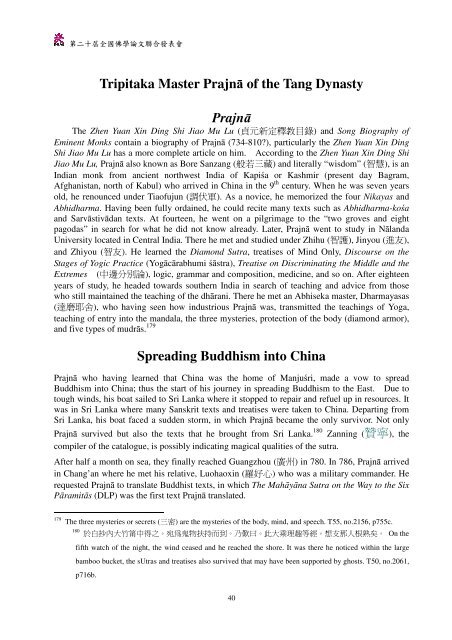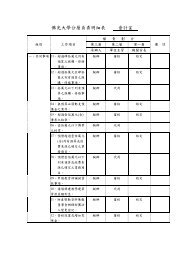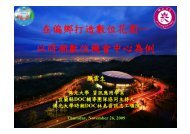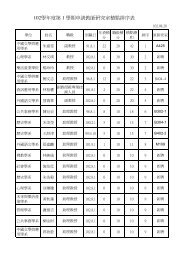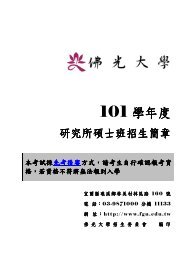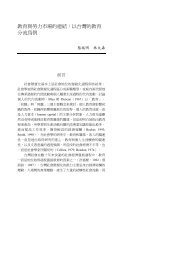第 二 十 屆 全峖 國 佛 學 論 文尠 聯 合峯 發 表 會Tripitaka Master Prajnā of the Tang DynastyPrajnāThe Zhen Yuan Xin Ding Shi Jiao Mu Lu ( 貞 元 新 定 釋 教 目 錄 ) and Song Biography ofEminent Monks contain a biography of Prajnā (734-810?), particularly the Zhen Yuan Xin DingShi Jiao Mu Lu has a more complete article on him. According to the Zhen Yuan Xin Ding ShiJiao Mu Lu, Prajnā also known as Bore Sanzang ( 般獭 若 三 藏 ) and literally “wisdom” ( 智 慧 ), is anIndian monk from ancient northwest India of Kapiśa or Kashmir (present day Bagram,Afghanistan, north of Kabul) who arrived in China in the 9 th century. When he was seven yearsold, he renounced under Tiaofujun ( 調 伏 軍 ). As a novice, he memorized the four Nikayas andAbhidharma. Having been fully ordained, he could recite many texts such as Abhidharma-kośaand Sarvāstivādan texts. At fourteen, he went on a pilgrimage to the “two groves and eightpagodas” in search for what he did not know already. Later, Prajnā went to study in NālandaUniversity located in Central India. There he met and studied under Zhihu ( 智 護 ), Jinyou ( 進 友 ),and Zhiyou ( 智 友 ). He learned the Diamond Sutra, treatises of Mind Only, Discourse on theStages of Yogic Practice (Yogācārabhumi śāstra), Treatise on Discriminating the Middle and theExtremes ( 中 邊訷 分 別低 論 ), logic, grammar and composition, medicine, and so on. After eighteenyears of study, he headed towards southern India in search of teaching and advice from thosewho still maintained the teaching of the dhārani. There he met an Abhiseka master, Dharmayasas( 達跲 磨跊 耶 舍 ), who having seen how industrious Prajnā was, transmitted the teachings of Yoga,teaching of entry into the mandala, the three mysteries, protection of the body (diamond armor),and five types of mudrās. 179Spreading Buddhism into ChinaPrajnā who having learned that China was the home of Manjuśri, made a vow to spreadBuddhism into China; thus the start of his journey in spreading Buddhism to the East. Due totough winds, his boat sailed to Sri Lanka where it stopped to repair and refuel up in resources. Itwas in Sri Lanka where many Sanskrit texts and treatises were taken to China. Departing fromSri Lanka, his boat faced a sudden storm, in which Prajnā became the only survivor. Not onlyPrajnā survived but also the texts that he brought from Sri Lanka. 180compiler of the catalogue, is possibly indicating magical qualities of the sutra.Zanning ( 贊訬 寧蹱 ), theAfter half a month on sea, they finally reached Guangzhou ( 廣 州 ) in 780. In 786, Prajnā arrivedin Chang’an where he met his relative, Luohaoxin ( 羅訌 好 心 ) who was a military commander. Herequested Prajnā to translate Buddhist texts, in which The Mahāyāna Sutra on the Way to the SixPāramitās (DLP) was the first text Prajnā translated.179 The three mysteries or secrets ( 三 密 ) are the mysteries of the body, mind, and speech. T55, no.2156, p755c.180於 白 抄侸 內 大 竹 筩 中 得 之 。 宛 為 鬼珌 物 扶侼 持 而 到 。 乃 歎 曰 。 此 大 乘靭 理 趣賱 等 經 。 想 支 那倴 人 根頨 熟 矣個 。 On thefifth watch of the night, the wind ceased and he reached the shore. It was there he noticed within the largebamboo bucket, the sUtras and treatises also survived that may have been supported by ghosts. T50, no.2061,p716b.40
第 二 十 屆 全峖 國 佛 學 論 文尠 聯 合峯 發 表 會TranslationIn 788, Prajnā translated the DLP with Jingjing ( 景 淨 ), a Persian of Daqin Temple ( 大 秦猵寺 ) into seven scrolls. 181 They presented it to the Tang Emperor Dezong (742-805), who wasknowledgeable in Buddhism. Having noticed the discrepancies and incoherency of the text dueto the fact that Prajnā did not understand the local language and Jingjing did not understandSanskrit or Buddhism, the emperor asked Prajnā to retranslate the text. 182 With Luohaoxin’srecommendation, an official imperial edict was issued and Prajnā was granted to retranslate thetext at the translation center in Xi Ming Temple ( 西 明 寺 ). As Xi Ming Temple was a well-knowntranslation center at that time where Xuanzhuang ( 玄 鞾 ) had once been, many monks also helpedwith the translation of DLP. 183In 789, Prajnā translated Da Hua Yan Zhang Zhe Wen Fo Na Luo Yan Li Jing ( 大 華 嚴詫 長 者問 佛 那倴 羅訌 延 力 經 ). 184 In 790, Prajnā was given the title “Tripitaka Master” and the royal purplekasaya, given only by the emperor to certain highly esteemed monks. Not long, Zhiruo ( 智 柔 )invited Prajnā to translate the Heart Sutra. He retranslated the Heart Sutra with Liyan ( 利 言借 ). 185In the same year, he returned to Kashmir in search for more texts as Amoghavajra ( 不 空705-744) had done before him. 186 His last two translation works were the Mahayana SUtra ofMind Ground Contemplation ( 大 乘靭 本 生 心 地 觀 經 ) and the Shou Hu Guo Jie Zhu Tuo Luo NiJing ( 守 護 國 界 主 陀 羅訌 尼 經 ). 187 In 792, Prajnā returned to Chang’an. In 794, he traveled aroundMount Wutai. In 796, Prajnā was requested by the Emperor Dezong to translate the AvataMsakaSutra in Chongfu Temple ( 崇 福 寺 ) of Chang’an.According to the Song Biography of Eminent Monks ( 宋侗 高珉 僧踶 傳 ), only three texts, the DLP,Da Hua Yan Zhang Zhe Wen Fo Na Luo Yan Li Jing( 大 華 嚴詫 長 者 問 佛 那倴 羅訌 延 力 經 ), and theHeart Sutra ( 般獭 若 波 羅訌 蜜犪 多 心 經 ), and a total of twelve fascicles were translated. 188 However,the Zhen Yuan Xin Ding Shi Jiao Mu Lu compiled by Yuanzhao ( 圓 照 ) included six texts inseventy fascicles. 189 These texts included Shou Hu Guo Jie Zhu Tuo Luo Ni Jing( 守 護 國 界 主 陀181 Jingjing is a follower of Jingjiao ( 景 教 ), also known as Brilliant Teaching or Nestorianism. See Max Deeg, “The“Brilliant Teaching”: The Rise and Fall of “Nestorianism” (Jingjiao) in Tang China” Japanese Religions (31) 2.http://www.japanese-religions.jp/publications/assets/JR31_2_a_Deeg.pdf The collaborative translation of areligious text between two religions is also significant that it indicates harmony among the religions of the Tangdynasty.182According to Zhen Yuan Xin Ding Shi Jiao Mu Lu, the emperor requested to retranslate in order to differentiatetexts that are Buddhists and non-Buddhists. This was because Jingjing was not a Buddhist, but a Nestorian whowas fluent in Chinese; thus during the translation, he would have used non-Buddhist ideas to interpret the text. SeeStanley Weinstein, Buddhism under the Tang, transl. Ven. Yifa, p163 and Zhen Yuan Xin Ding Shi Jiao Mu Lu, T55,no. 2157, p755c.183 Ten monks were named in the DLP who had helped out with the translation and compiling of DLP. See Ibid.184 Only one fascicle long, Prajnā and Liyan ( 利 言借 ) translated the text describing the power of the Buddha as meritattained from the offering of food. See T14, no.547. On Narayana see Fo Guang Dictionary, p3029 and 3542.185T8, no.254 and Stanley Weinstein, Buddhism under T’ang, p163.186 For more info on the text, see Shou Hu Guo Jie Zhu Tuo Luo Ni Jing ( 守 護 國 界 主 陀 羅訌 尼 經 ), (Tokyo: OokuraShuppan Kabushiki Kaisha ( 大 藏 出 版 株頶 式 會 社 ), 2000), p16.187These two sutras were among the few that remained popular.188T50, no.2061, p716b.189 X77, no. 1522, p191c.41


